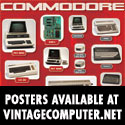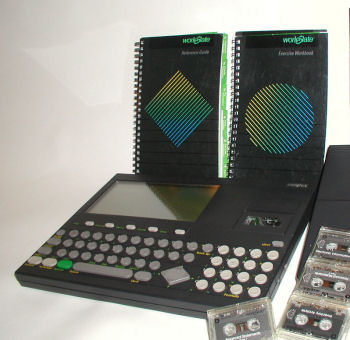BBC Interview about MITS Altair
SHARE |
|
  BBC Interview about MITS Altair
BBC Interview about MITS Altair |
by Bill Degnan - 04/03/2010 18:52 |
|
I was interviewed on BBC last night on the subject of the Altair and it's historical importance. Here is essentially a transcript of the interview, but I assume they trimmed out things to fit whatever they were using it for. I do not have a copy of the audio, or know when it was broadcast.
Q What's an Altair 8800 like? BD: The Altair was first sold in early 1975 and was extremely primitive for today's standards running at a minute fraction of the processor speed and memory. The computer itself was housed in a blue and grey metal box, about 50 centimeters deep by 18 centimeters tall (or 7 inches by 20 inches). The only way to interface with the Altair was through a series of toggle switches on the front which were used to enter machine language commands one at a time in octal or hexadecimal notation. There was no keyboard or video screen. In fact the only "display," if you want to call it that, was the set of red indicator lights on the front panel that would flash on and off depending on what the program was doing at the time. And that was it - the base Altair really did not do anything. This computer was not sold to persons who wanted to do word processing or play games. There was no software available - you had to write your own, and typically you'd store your program on a teletype machine. Any other storage such as disk drives were simply too expensive. It was the potential of this computer that inspired the first pioneers to bond with this great cheap box and to build an industry around it, not the finished product. Q It was the right product at the right time wasn't it? (cheap calculators were around, so was pong...) BD Yes. Timing was definitely a factor In the early 1970's useful computers were simply too expensive for the average person, and although there was potential demand for personal use computers, the dominant companies at the time, such as IBM and Digital Equipment Corp did not see enough potential in the business to pursue this. Cost was also a factor. There were companies making computer games like Atari PONG which were wildly popular, and there were also companies making computerized desk calculators that were not quite personal computers, but they had many of the same applications. At this time there were plenty of people building their own "homebrew" computers using surplus parts, mostly to accomplish a very specific task, but these were not commercial devices. For example Ham Radio enthusiasts were building computerized scanners. What the Altair did was to unify the homebrew and home user movements - When the Altair became available instantly homebrew computer clubs formed all over the US made up of like-minded computer enthusiasts who worked to build Altair systems together. The system was cheap enough and general purpose enough and powerful enough to inspire the calculator crowd, and the game designer crowd, and so on around one common platform. A number of new magazines also appeared with tips and tricks for this new system. Q An important first step on the road to the machines we have today? (the chip architecture evolved into the x86 series and we're still living with that format today) BD The big breakthrough in personal computing came when Intel began selling it's 8080 CPU which was the first microprocessor to attempt to compete with much more expensive mini computers. The Altair was the first commercial general purpose microcomputer to use the Intel 8080 as it's CPU A related achievement for the Altair was the standardized bus structure also found in computers today. Using the well-documented Intel 8080 chip instruction set, and the Altair Bus, also known as the S-100 bus ; companies could build interface cards, printers, display terminals, teletype interfaces and most importantly software that could be used with the Altair and any other computer that applied these standards. The clone computer could now be sold, and commercial software. Q Microsoft owes its foundation to the Altair, don't they? BD Absolutely. Bill Gates and Paul Allen's first commercial software was "Micro-Soft" BASIC, which was originally distributed on papertape for use on a teletype. The teletype was the I/O device employed by most Altair users, before cassette storage and disk drives. Micro-soft did not invent BASIC, but they were among the first to look at PC software as a product to be sold and supported and not simply given away for free with the computer. This was very controversial at the time. You could also say that software piracy owes its foundation to the Altair as well. Q Was Ed Roberts happy to be so closely identified with the Altair? BD I don't see how he could not have been, but he was not known to participate in the computer industry must after he retired and sold MITS in the later 70's. As I understand it, he spent the rest of his professional career as a doctor, removed from the computer business. Reply |
|
Resources:

Popular Topics and FAQs
Past Issues:
Before we switched over to a blog format, past page archives here:
Vintage Computer Festival East 3.0 June 2006
Commodore B Series Prototypes July 2006
VOLSCAN - The first desktop computer with a GUI? Oct 2006
ROBOTS! - Will Robots Take Over? Nov 2006
Magnavox Mystery - a Computer, or? Jan 2007
The 1973 Williams Paddle Ball Arcade Computer Game Feb 2007
The Sperry UNIVAC 1219 Military Computer May 2007
VCF East 2007 - PET 30th Anniversary June/July 2007
The Electronic Brain August 2007
Community Memory and The People's Computer Company October 2007
Charles Babbage's Calculating Machine December 2007
Vintage Computing - A 1983 Perspective February 2008
Laptops and Portables May 2008
From Giant Brains to Hobby Computers - 1957 to 1977 August 2008
Historic Computer Magazines November 2008
World's Smallest Electronic Brain - Simon (1950) December 2008 - Feb 2009
Free Program Listings Spring 2009
Computer Music Summer 2009
Popular Electronics Jan/Feb 1975 - Altair 8800 Fall 2009
Early Microcomputer Mass Storage Summer 2010
technologies workslate 2

This image was selected at random from the archive. Click image for more photos and files from this set.